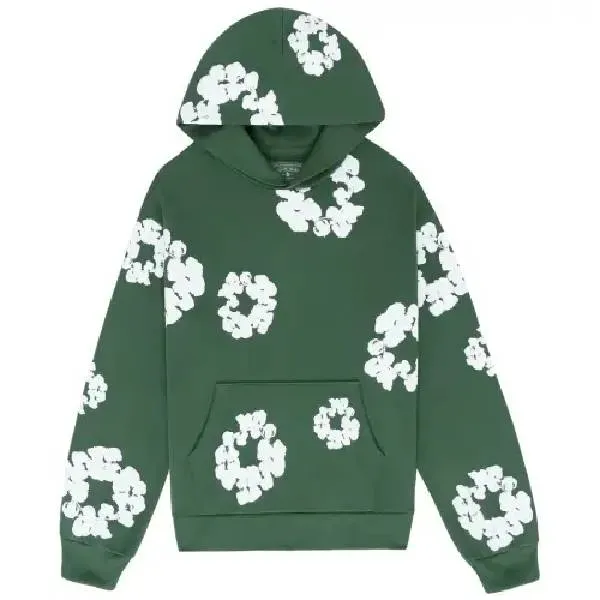
In the ever-changing world of fashion, few brands have managed to strike a balance between bold creativity, cultural commentary, and timeless appeal the way Denim Tears has. Founded by Tremaine Emory, the brand is far more than just another streetwear label—it’s a powerful statement that intertwines heritage, art, and history into wearable forms of expression. Denim Tears has become a movement, telling stories of resilience, culture, and identity, while maintaining a striking aesthetic that resonates with modern fashion enthusiasts.
The Vision Behind Denim Tears
Denim Tears was created in 2019 by Tremaine Emory, a creative director, designer, and cultural figure known for his work with global names like Supreme, Kanye West, and Virgil Abloh. But with Denim Tears, Emory sought to carve out something more personal. The brand is rooted in history—particularly the African American experience—and often explores themes of slavery, oppression, and resilience. Emory uses fashion as a canvas to highlight untold stories, embedding powerful narratives into denim, cotton, and other materials.
Denim Tears is not about chasing fleeting trends; it’s about weaving together memory, identity, and meaning. Each collection feels like a cultural artifact, crafted to provoke thought and spark dialogue.
Iconic Designs and Symbolism
The standout feature of Denim Tears is its iconic cotton wreath motif, often seen printed across jeans, hoodies, and accessories. This design is not a random pattern—it’s deeply symbolic. The cotton wreath reflects America’s painful history of slavery, referencing the cotton fields that enslaved African Americans were forced to work on. By reclaiming this imagery and placing it boldly on garments, Emory transforms a painful reminder into a form of empowerment and cultural reclamation.
In addition to the cotton wreath, Denim Tears often collaborates with other influential brands like Levi’s, Converse, and Stüssy, creating limited-edition pieces that merge cultural storytelling with high fashion aesthetics. The brand’s jeans, jackets, and hoodies are more than just clothes; they are statements that connect the wearer to a larger cultural dialogue.
Denim Tears as Art
One of the most fascinating aspects of Denim Tears is that it exists at the intersection of fashion and art. Tremaine Emory has repeatedly emphasized that Denim Tears is not just a fashion label but a platform to explore deeper ideas. Whether it’s through clothing drops, museum-style installations, or multimedia projects, Denim Tears consistently challenges the way people view fashion.
By incorporating elements of history, music, and Black culture, Emory ensures that Denim Tears pieces carry artistic weight. They aren’t simply garments to be worn, but pieces of living history to be understood and reflected upon. This unique perspective has allowed Denim Tears to earn respect not only within streetwear circles but also within the broader cultural and artistic communities.
Influence on Streetwear and Fashion
Streetwear has always been about more than just clothes—it’s about identity, expression, and community. Denim Tears embodies all of this while standing apart from typical hype-driven brands. Its pieces don’t just ride the wave of streetwear culture; they elevate it by bringing in deeper storytelling.
In today’s era, where authenticity is highly valued, Denim Tears resonates with younger audiences who are not only looking for stylish clothing but also for pieces that carry meaning. Wearing Denim Tears is not just about fashion—it’s about aligning with a cultural statement. This makes the brand’s drops highly sought-after, often selling out quickly upon release.
Collaborations and Global Recognition
Another reason Denim Tears Shorts has risen to prominence is through its collaborations with iconic brands. For example, the Denim Tears x Levi’s collection reimagined classic denim silhouettes with symbolic cotton wreath embroidery, merging Levi’s timeless Americana aesthetic with Emory’s cultural storytelling. Similarly, collaborations with Converse featured sneakers adorned with the same powerful motifs, further expanding the brand’s reach.
These collaborations are not only stylish but also meaningful. They allow Denim Tears to share its cultural message with wider audiences across the globe, while still maintaining exclusivity and artistic integrity.
Beyond Fashion: A Cultural Conversation
What makes Denim Tears truly stand out is its role in sparking cultural conversations. Through its storytelling, the brand encourages people to reflect on history, identity, and resilience. By wearing Denim Tears, individuals participate in that dialogue, becoming part of a community that values both fashion and culture.
Tremaine Emory has often emphasized that fashion can be a vehicle for education, activism, and remembrance. Denim Tears proves this point by turning everyday garments into powerful statements. Whether it’s through a pair of jeans embroidered with cotton motifs or a hoodie that references African American history, each item challenges the wearer—and the world—to think deeper.
The Legacy of Denim Tears
Though still relatively young compared to heritage fashion houses, Denim Tears has already cemented itself as an influential force in fashion. It’s a reminder that clothing can transcend mere trends and serve as a tool for storytelling, cultural preservation, and empowerment.
Denim Tears isn’t just a brand—it’s a legacy in motion. By confronting history while celebrating creativity, it continues to inspire a new generation of designers, artists, and cultural thinkers.
Conclusion
Denim Tears is far more than stylish apparel—it’s a cultural movement. With every design, Tremaine Emory transforms fabric into a statement, reclaiming narratives and sparking conversations that extend beyond fashion. In a world where many brands chase hype, Denim Tears stands as a beacon of authenticity, heritage, and creativity. Wearing Denim Tears is not just about embracing style—it’s about embracing history, culture, and identity.





